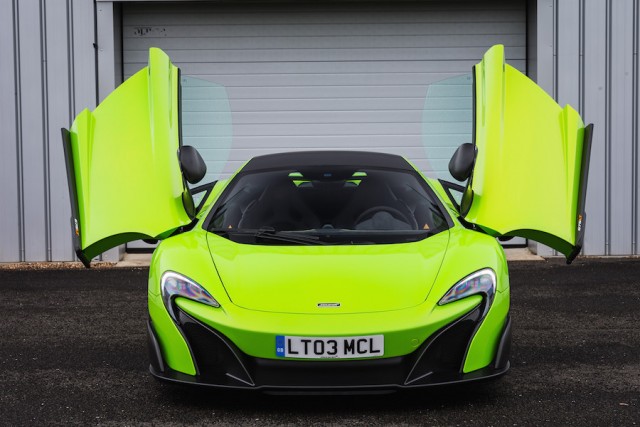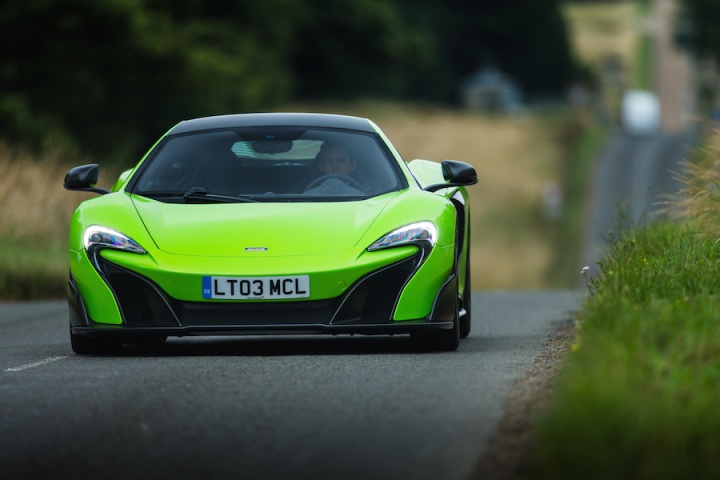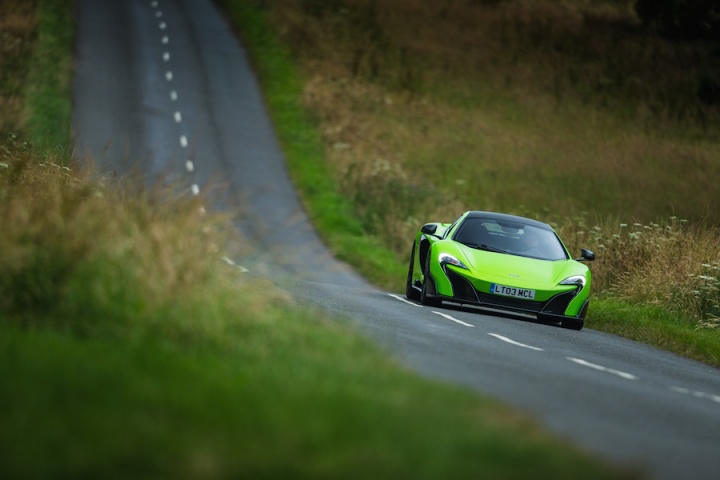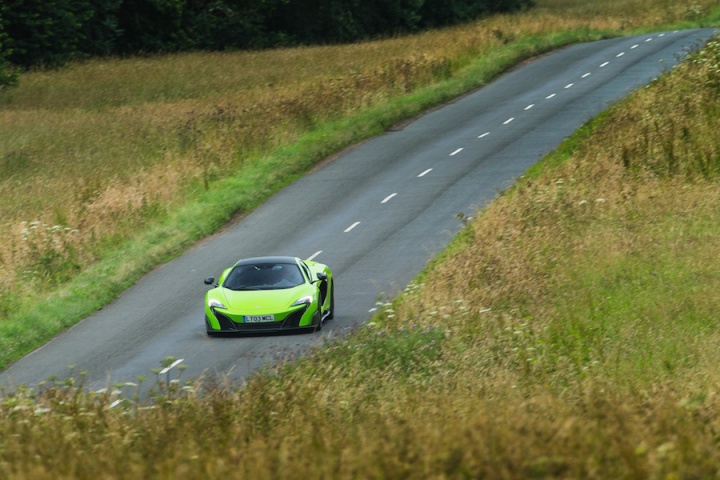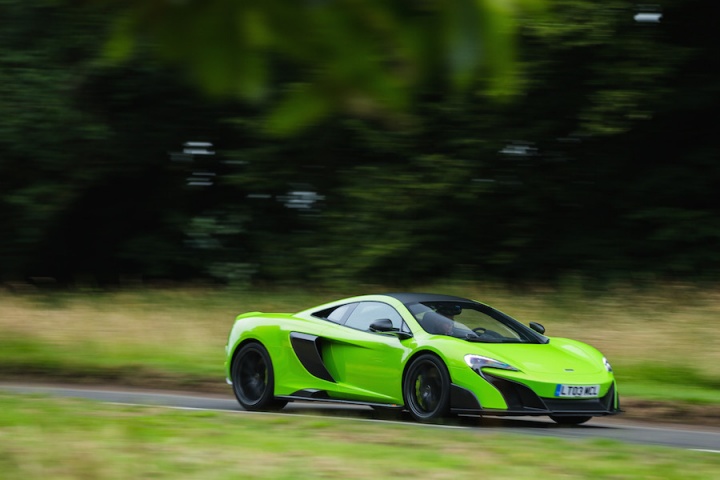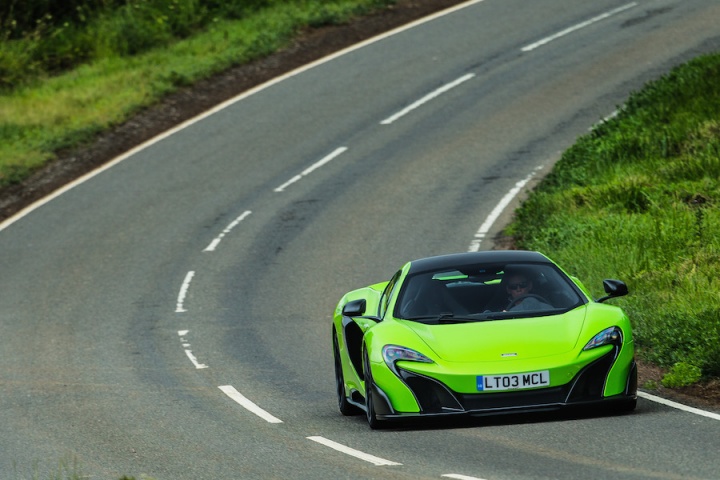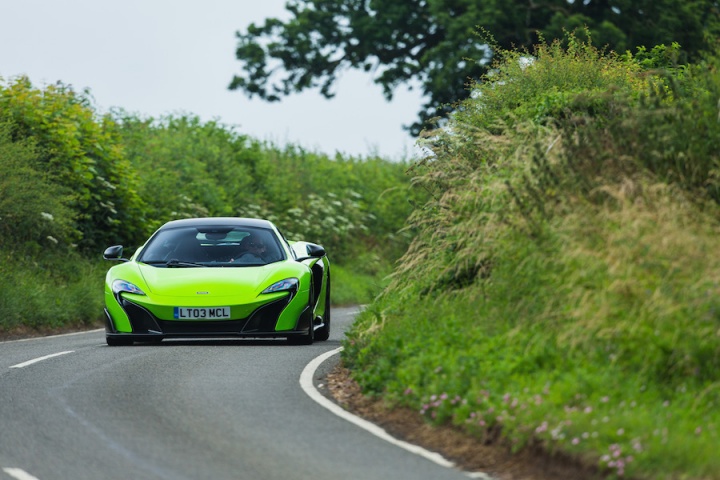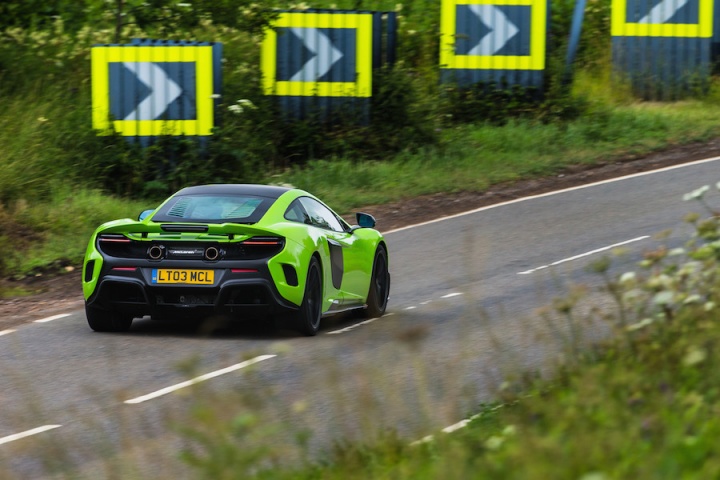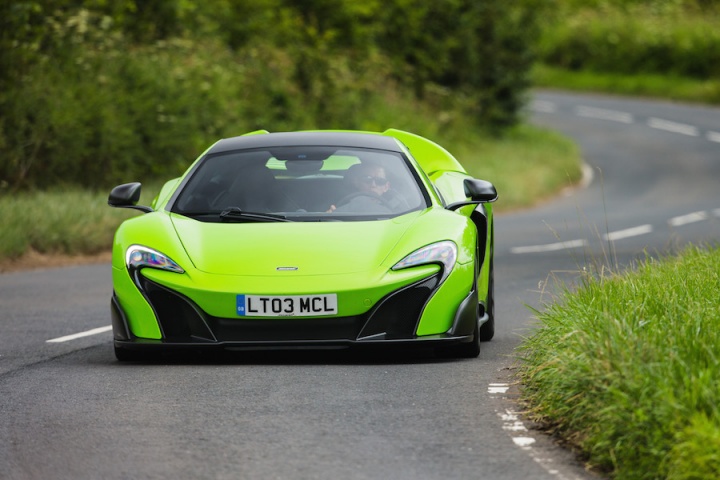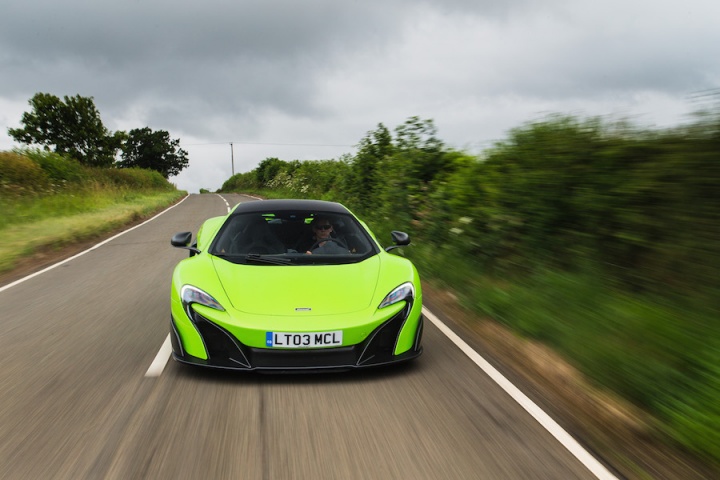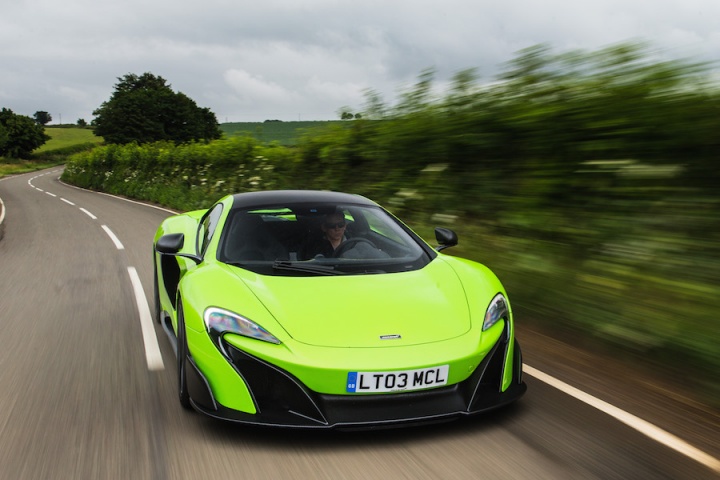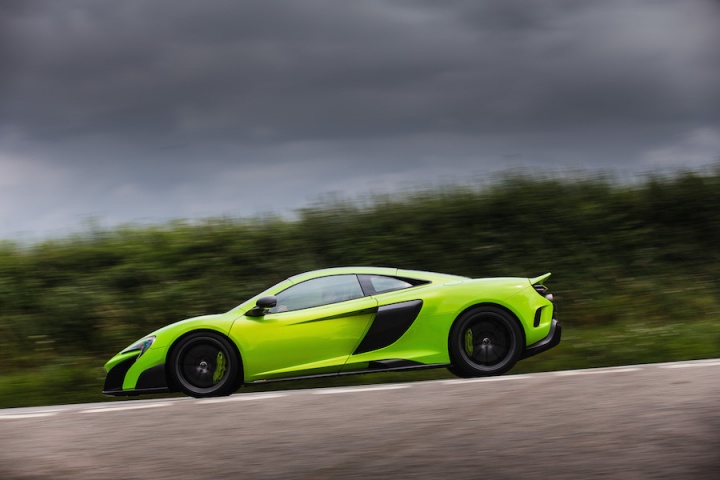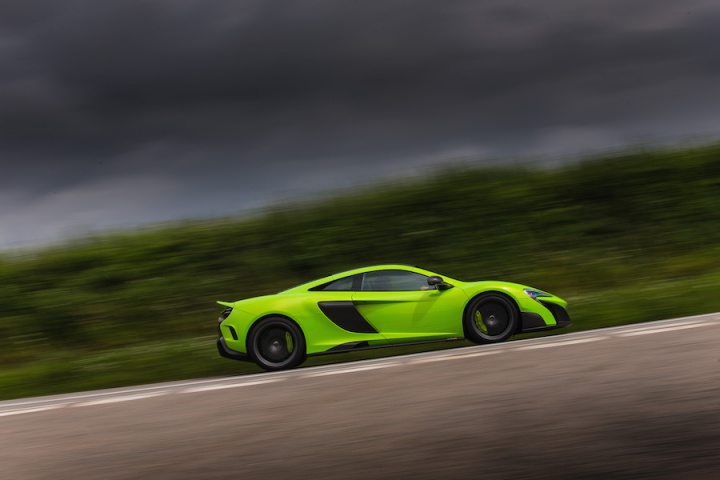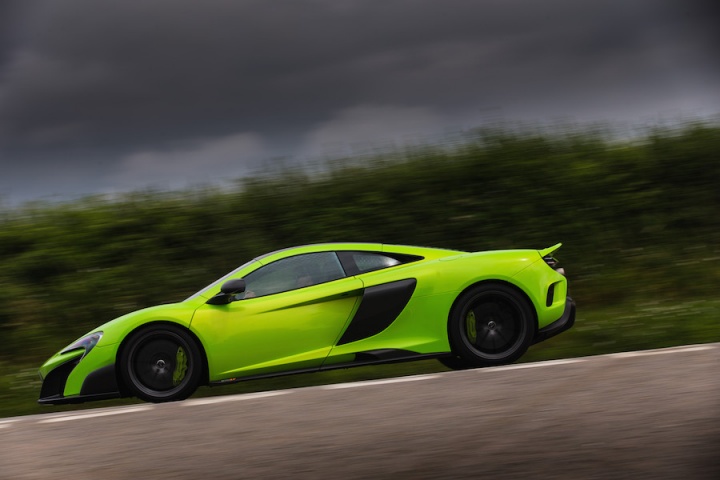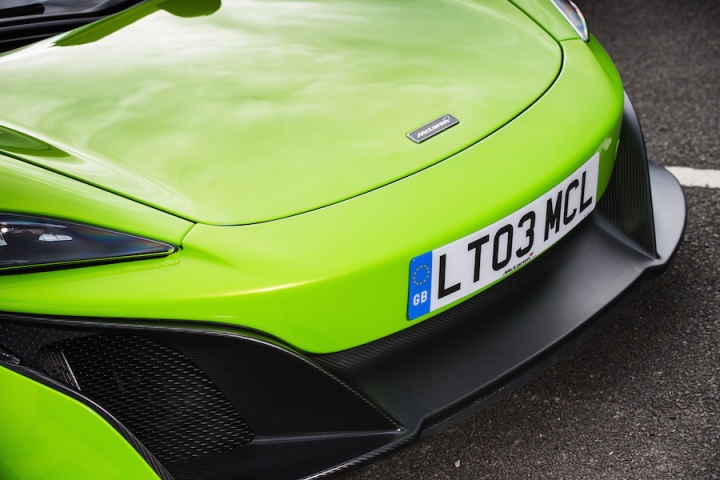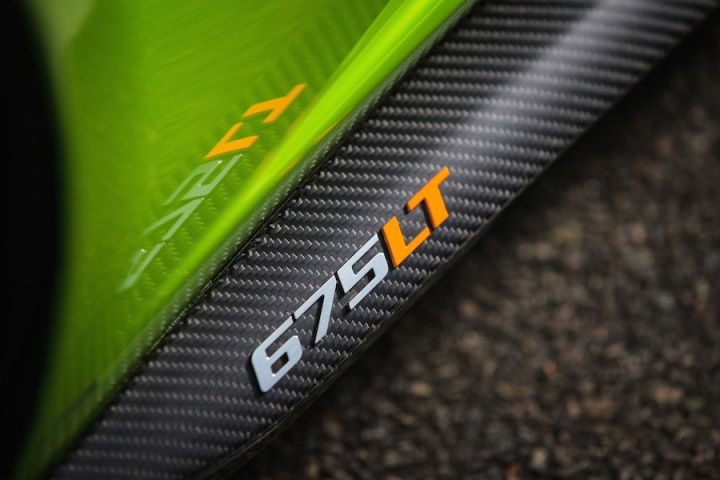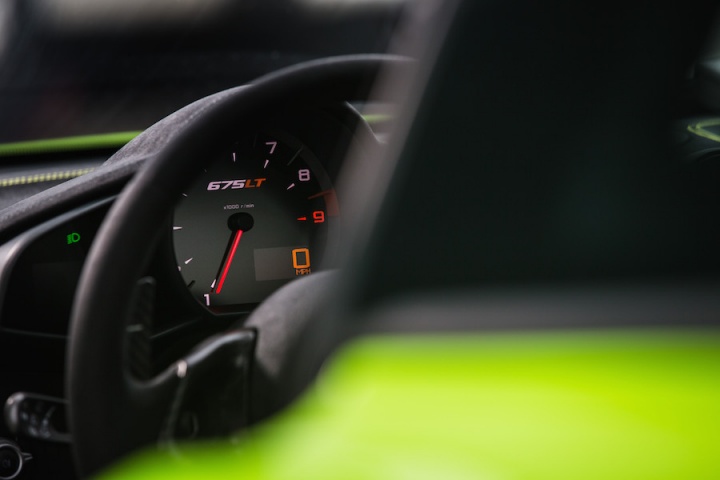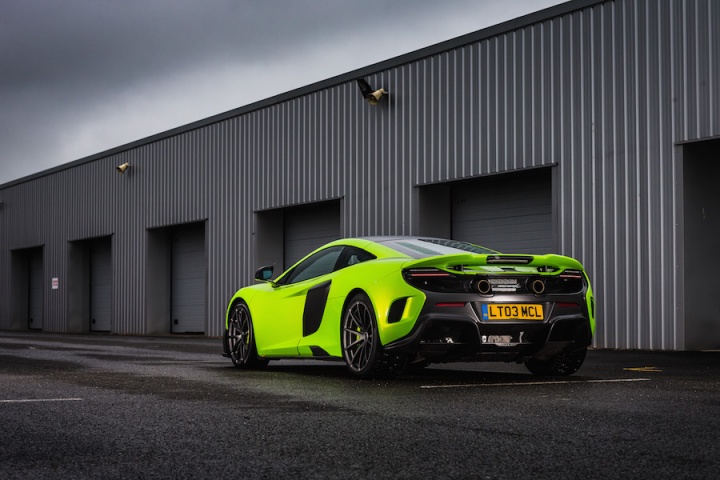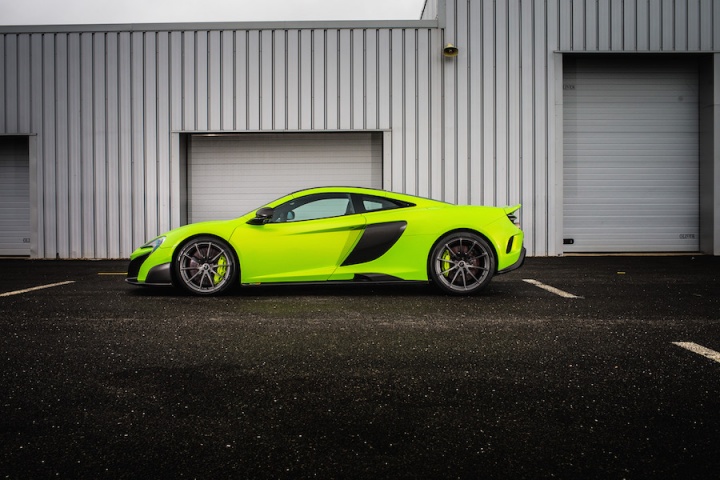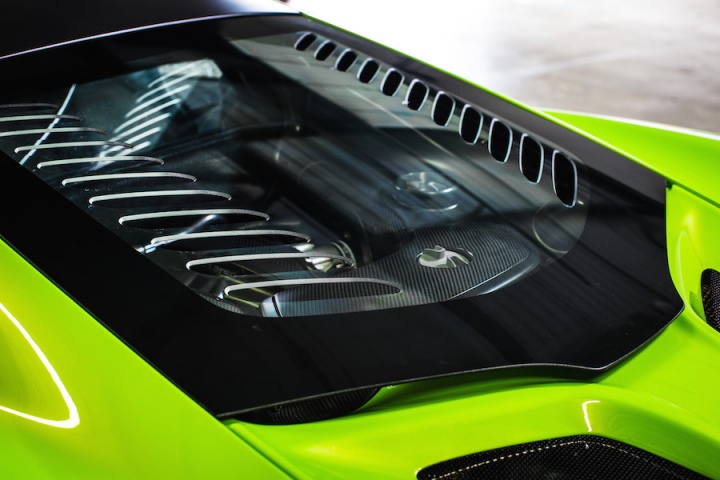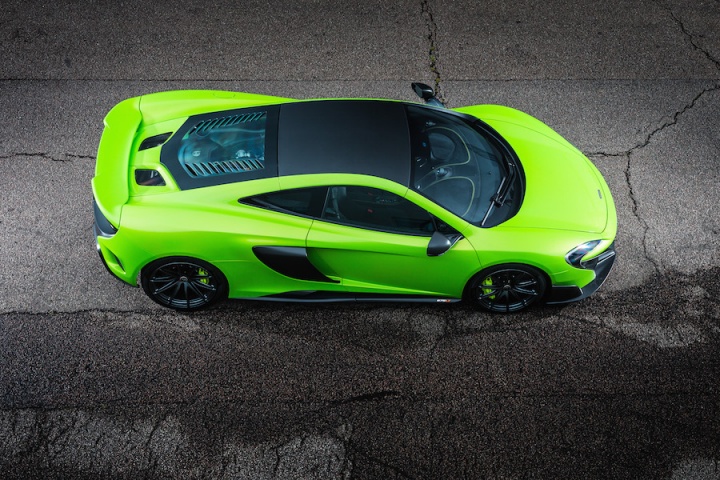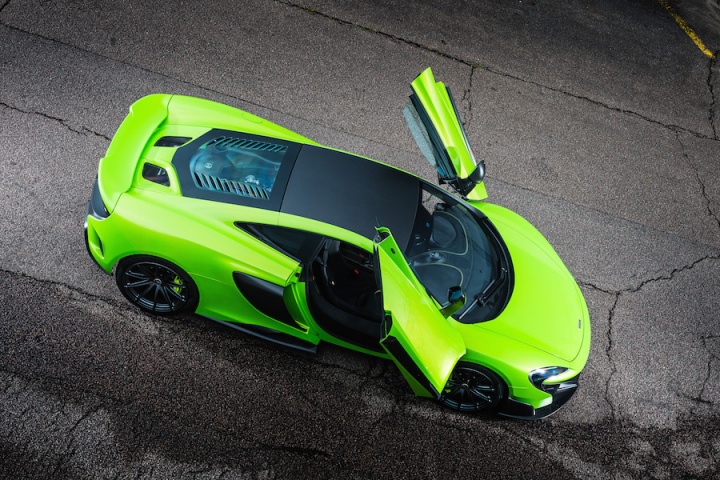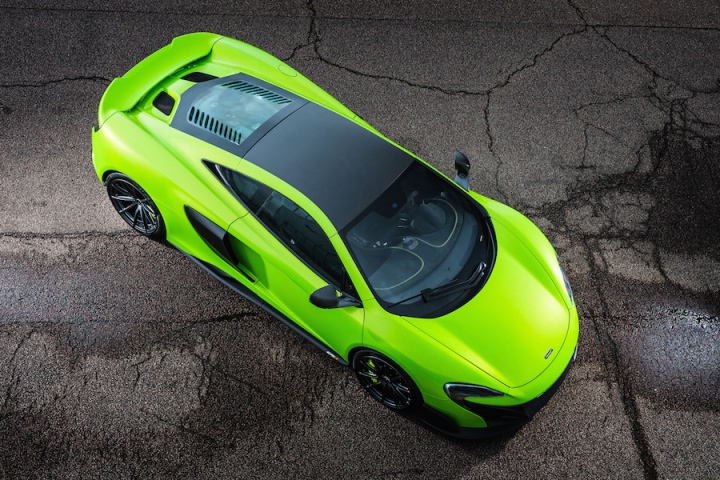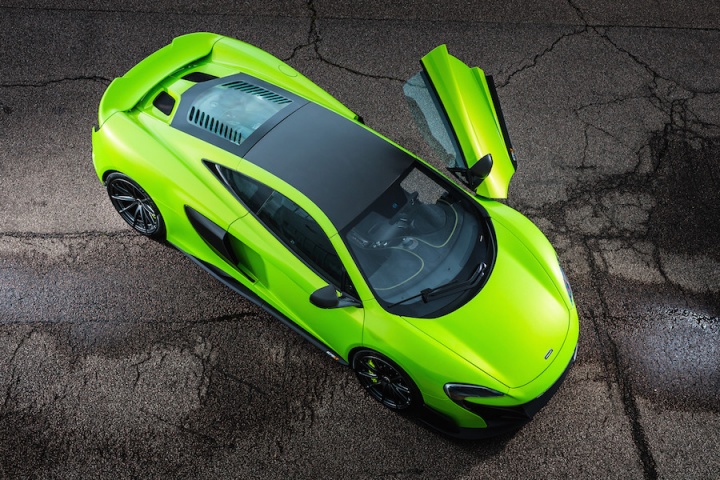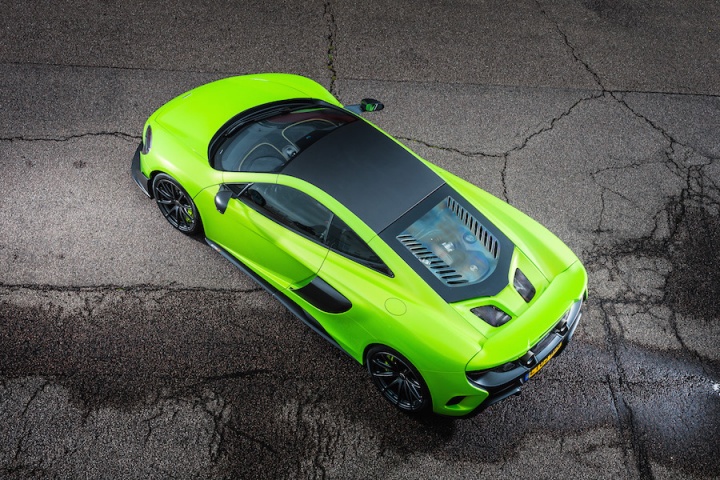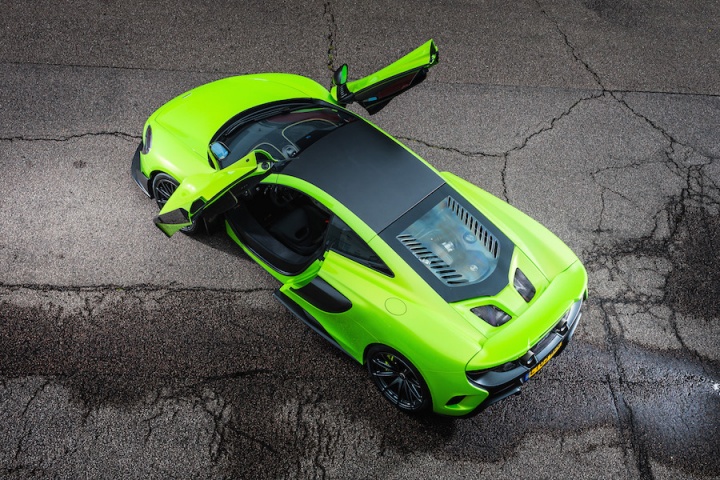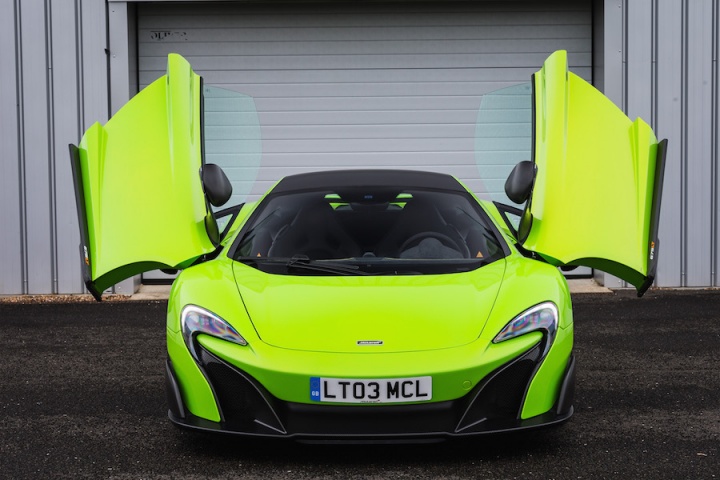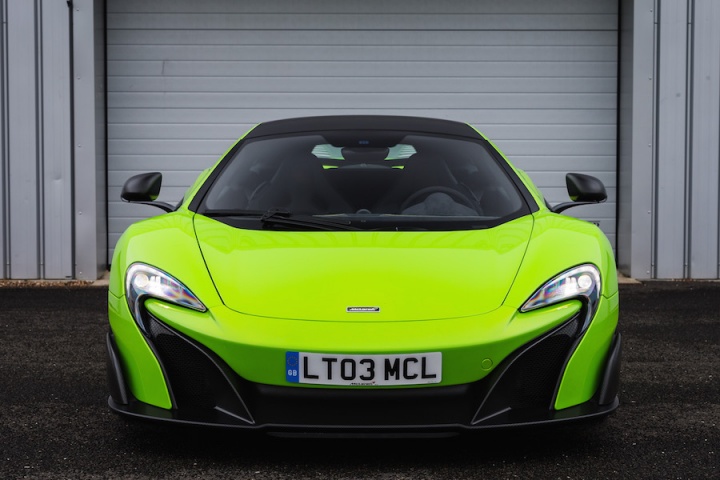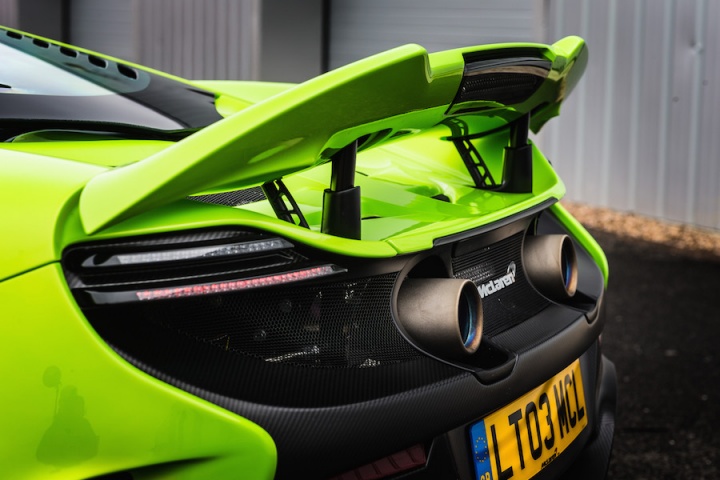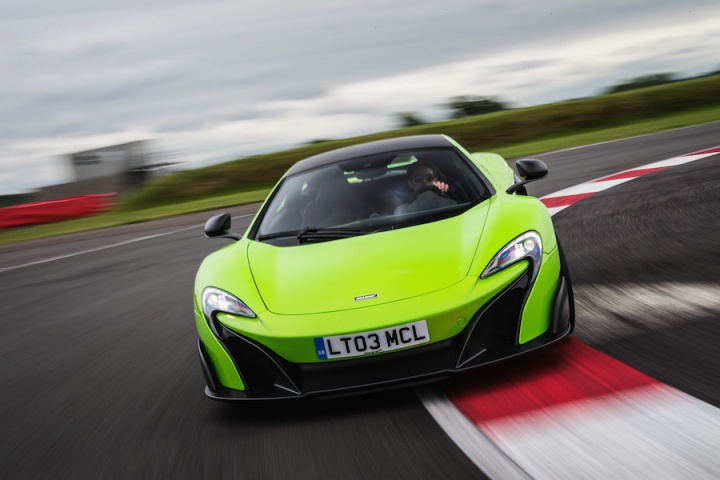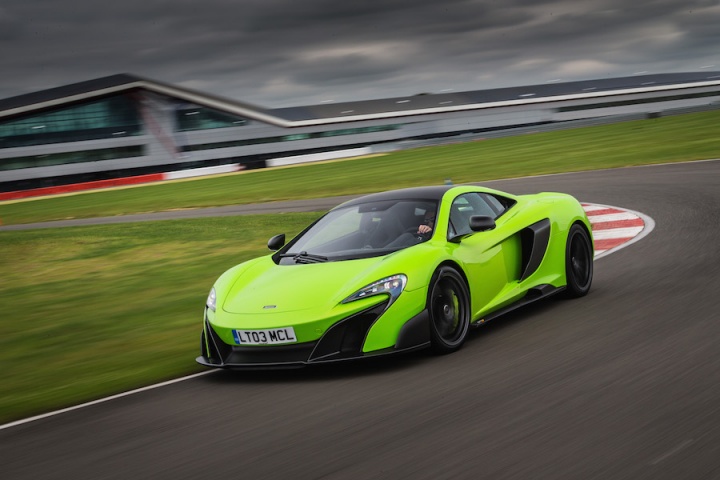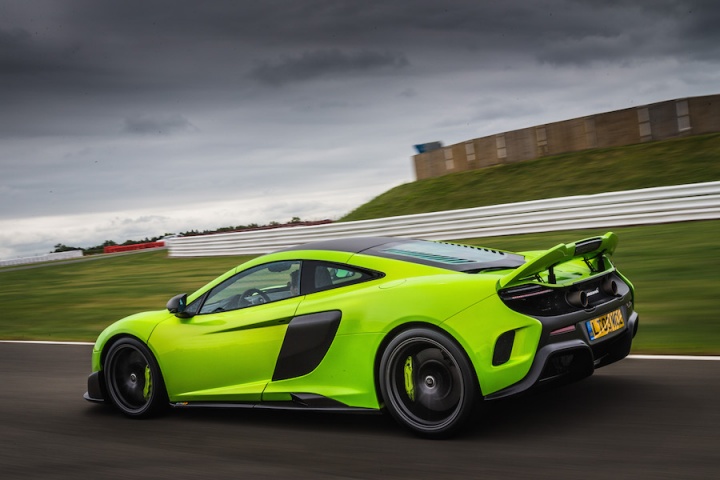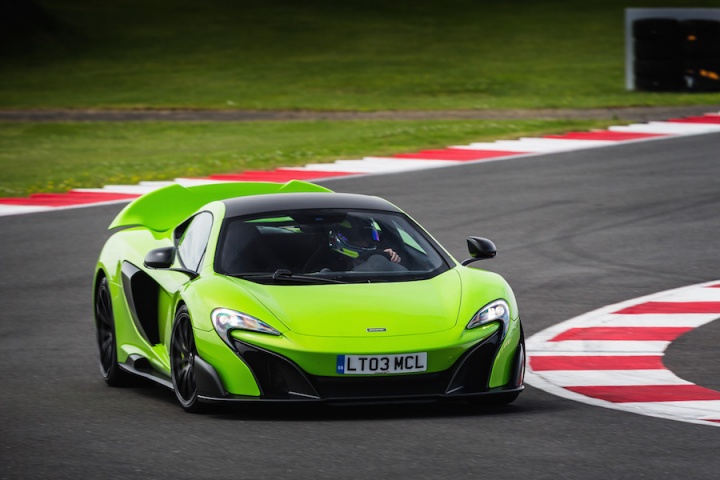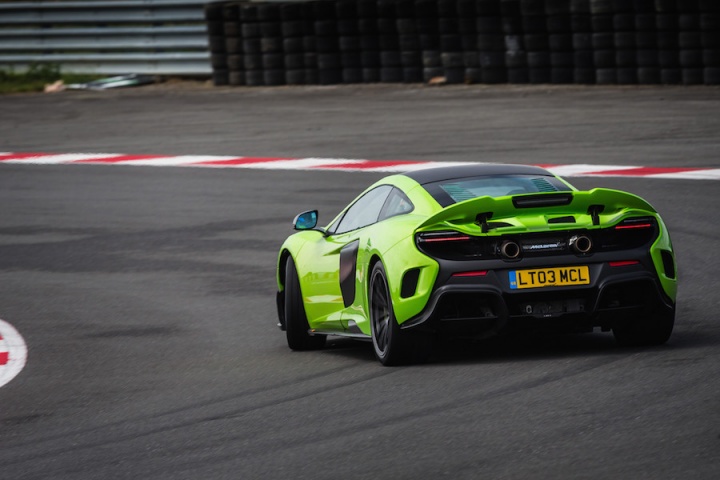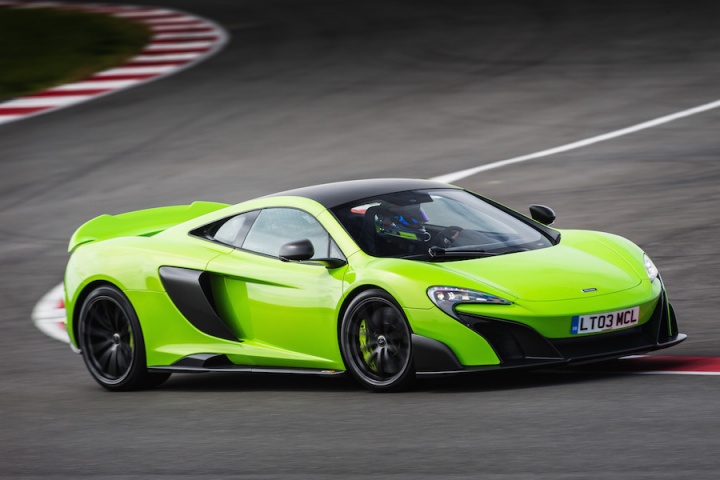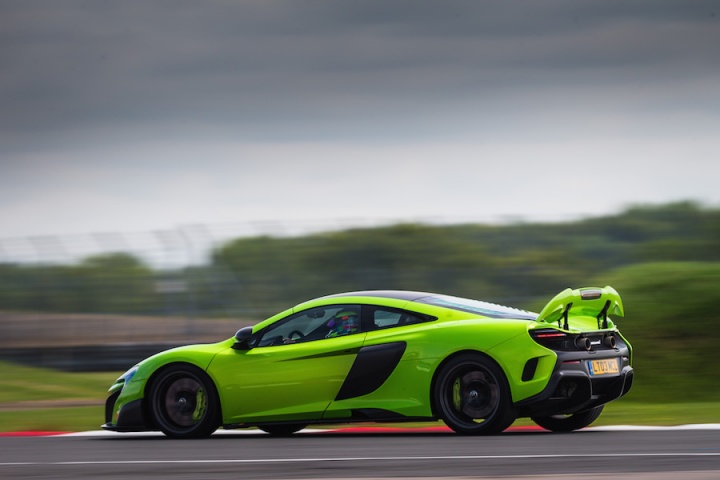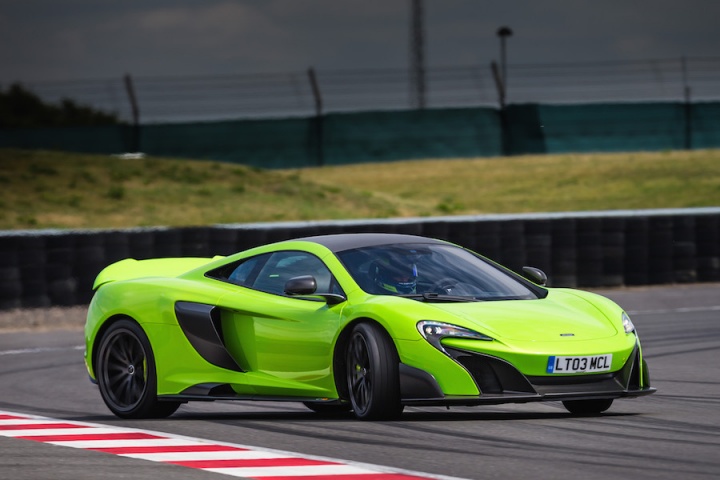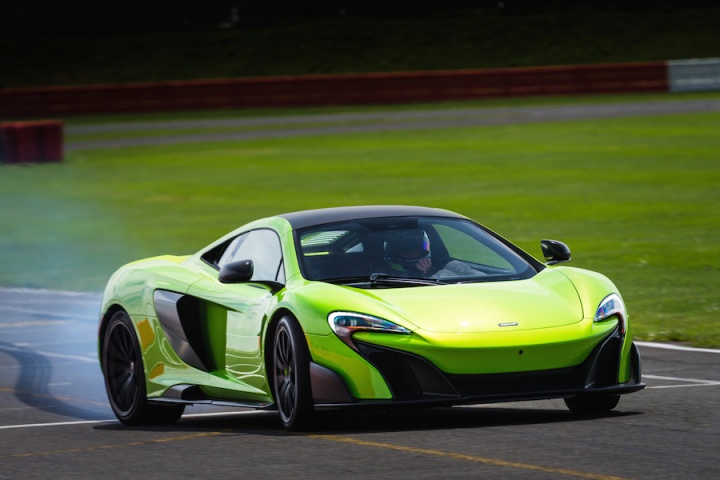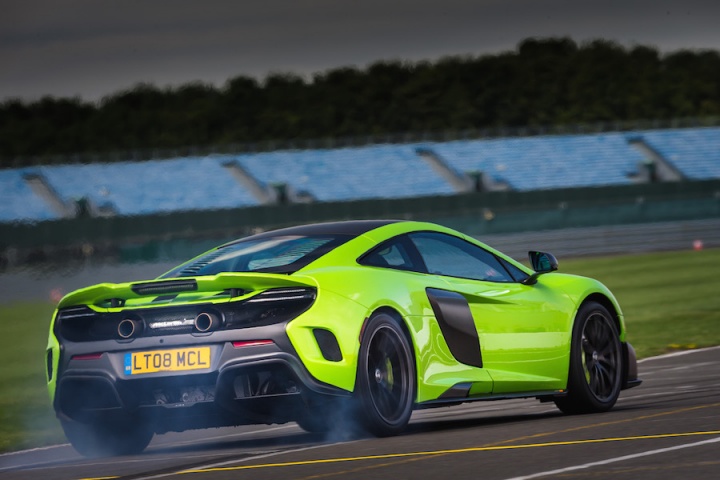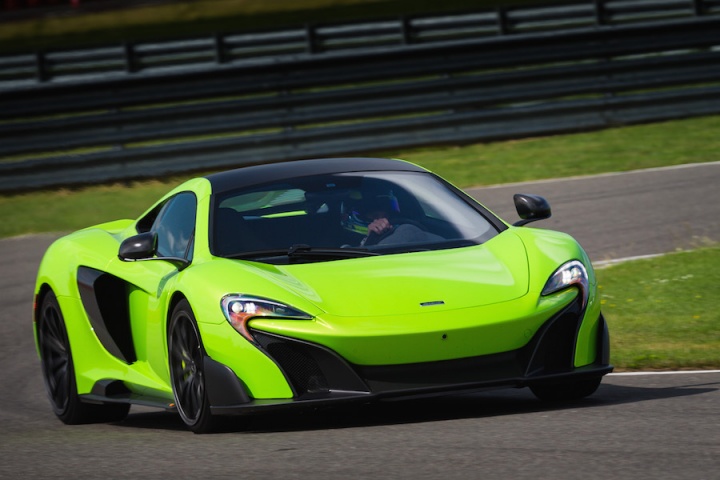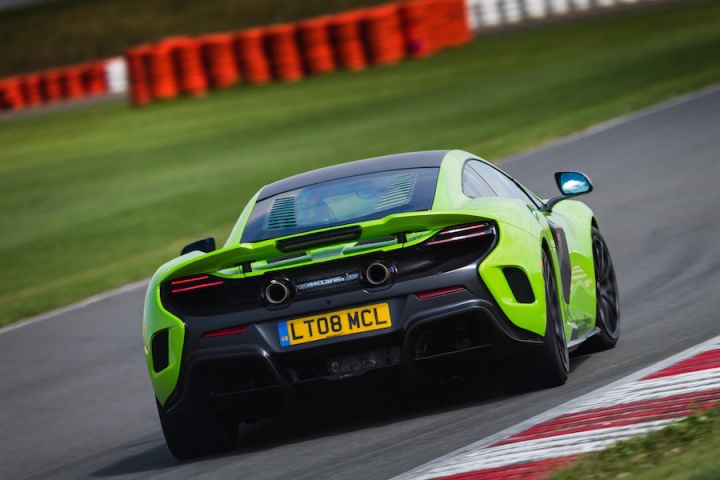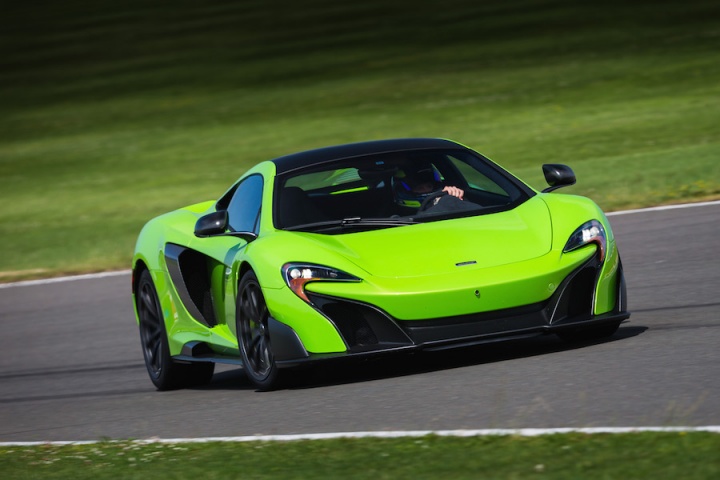Overall rating: 5/5
McLaren revives the evocative Long Tail name from its motorsport past to create a sensational, limited-production flagship to its supercar range. Lighter by 100kg, with completely revised aerodynamics and slightly longer than the 650S it's based on, the 675LT ups the intensity over its already phenomenal relation. It's irrelevant what we say in this review, as it's already sold out - the 500 owners are very lucky indeed.
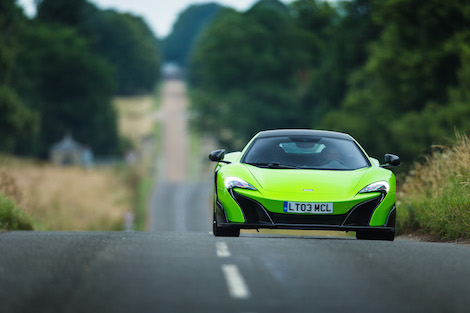
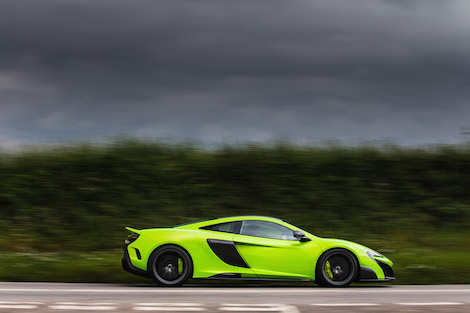
In the metal 5/5
McLaren had a problem. After its F1 road car conquered motorsport (despite the firm's insistence that it never had plans to turn it into a racing car), the competition caught up. Develop or die; and McLaren developed. The F1 GTR was turned into the F1 GT or as it's better known, the 'Longtail'. It was much more than just a lengthened (by a not insignificant 600mm) and aerodynamically optimised F1, as the F1 GT was extensively revised under that new, longer, 100mm wider body with increased front and rear tracks, bigger wheels, a new and larger roof snorkel and, on the homologation road cars, no air restrictor to allow the full 636hp.
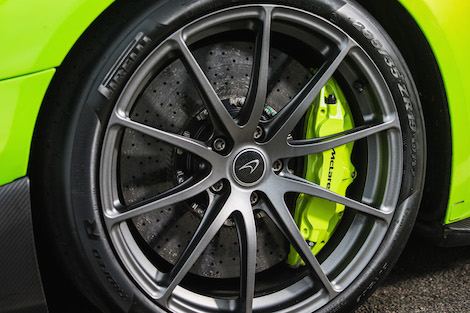
The 675LT follows that same brief, though without the need to homologate for racing. Just 500 will be built and all are already accounted for. The 675LT is not quite as lengthy as its namesake, the overall stretch just 34mm, though the changes elsewhere are just as extensive. It's 100kg lighter for a start, which was no easy task given the already lightweight construction of the McLaren 650S. From the A-pillar back all the bodywork is unique and built in carbon fibre; the rear track has been increased; the rear diffuser is larger; and there's a 50 per cent increase in size for the rear spoiler/airbrake. There's a new front splitter too, again in carbon fibre, and it's some 80 per cent bigger than that on the 650S. All these changes mean a significant increase in downforce.
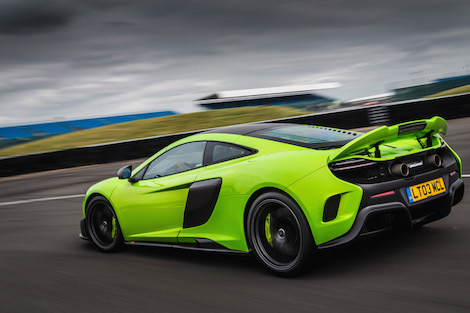
Inside, the changes are less obvious; the window switches have been re-positioned to the doors (saving weight in the wiring loom), while other weight saving measures including thinner glass, a titanium exhaust system, lightweight wishbones and uprights and a polycarbonate engine cover; even the bolts holding on McLaren's lightest alloy wheel are made of titanium and the full set of bolts saves 780g. The attention to detail is staggering, the execution exemplary, the LT's changes creating a more visually arresting supercar, which some within McLaren admit is perhaps a little bit too close in performance to the P1 for comfort.
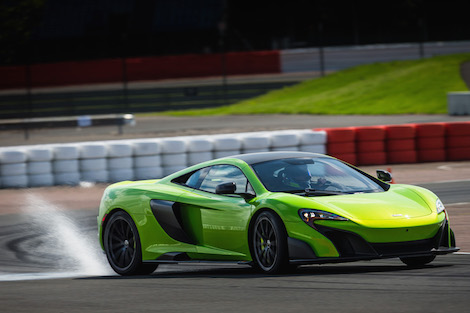
Driving it 5/5
Just 25hp separates the 675LT from it 650S relation, for an overall total of 675hp. It is shifting 100kg less mass though, and that translates to even more eye-widening performance. Nobody is likely to get out of a 650S and say it needs more performance, but that's exactly what the 675LT delivers. The engine has been extensively reworked, with inertia removed thanks to lighter con rods. Some 50 per cent of the engine's components having being redesigned for use in the 675LT. The result is obvious as soon as you start it. The 675LT is meant to be a more visceral car, so the engine mounts are harder and there's less sound deadening inside the cabin, and the 3.8-litre twin-turbo V8 is immediately more intense, with some vibration and resonance apparent. It's neither intrusive, nor overbearing, but a welcome, rousing accompaniment and fitting for such a track-focused machine.
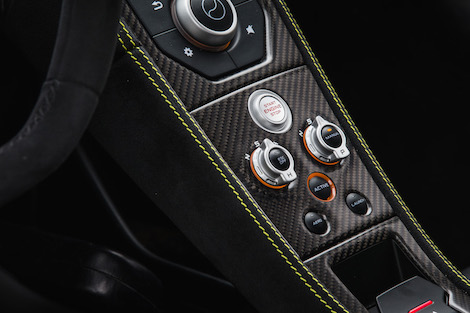
Sitting in the deeply bolstered sports seats clutching the steering wheel it's apparent that the changes to the steering ratio for faster response have worked. There is an immediacy to the wheel that's initially surprising. The lighter suspension borrows bits from the McLaren P1; with a 20mm increase in track and more focused geometry there's a greater feeling of connection, even on the smooth surface of Silverstone's three-kilometre long International Circuit. Spring rates are some 27 per cent higher at the front and 63 per cent at the rear for improved control. The ESC stability control function has now been separated from the different drive modes, allowing a step from partially on in ESC Dynamic mode, working in the background, to fully off. The 675LT features the latest generation of McLaren's ProActive Chassis Control, with unique settings to suit the more hardcore nature of the 675LT's make-up, while unique Pirelli P Zero Trofeo R tyres, with a stiffer internal structure, add to the increased focus, too.
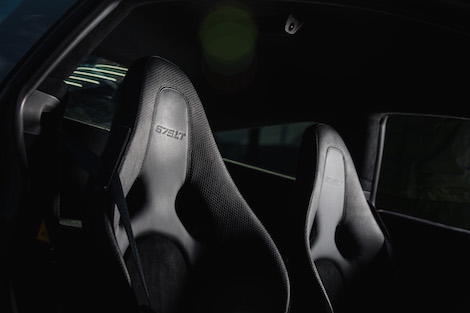
We've had time as a passenger in the 675LT before getting into the correct seat, yet still the differences when finally driving it are initially shocking. The steering is beautifully weighted, the response to input quicker, more clear, the wheel's rim delivering far more information than the 650S does. The greater focus of the chassis is obvious, the 675LT delivering so much more information to you, yet, for all the increase in intensity and clarity, it's done so without being detrimental to its usability on the road - where it still rides with remarkable composure. That's thanks in no small part to the lack of a traditional mechanical anti-roll bar. On track the step in ability is remarkable; corners can be approached with far more speed, the reduced weight making for easier carried - and gained - speed, the engine's instantaneous response and huge power meaning you're kept busy adding gears via the seven-speed paddle-shifted SSG twin-clutch automatic transmission. On the Hangar Straight, without the high speed exit of Becketts the 675LT arrives at Stowe with nearly 260km/h on the speedometer, yet the carbon ceramic brakes have no issue washing off that speed. The SSG gearbox executes its shifts with no perceptible delay. McLaren reckons that, short of adding more Formula One technology, and compromises they would bring, it's about as fast as a gearshift can be. It uses 'inertia push' in its most focused Track setting, when there's over 5,000rpm and 60 per cent throttle; this uses kinetic energy to give a torque pulse to ensure there's no drop in acceleration as the next gear is selected.
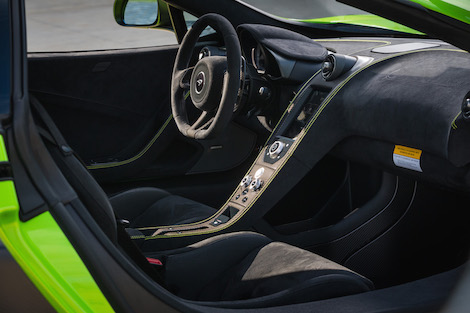
The speed of the gearshift helps make it possible to reach 100km/h in 2.9 seconds - on the way to a 330km/h maximum - with launch control on. McLaren has also included a burn-out launch in the 675LT's electronic systems if you want to showboat on take-off. There's a track app setting, too, with a camera system allowing you to record your track laps and download and check out your sector times.
A more playful, more engaging, involving and interesting car to drive than its already incredible 650S relation, the McLaren 675LT really delivers on its promise. It's a shame then that the company is building just 500 examples, all of which are already sold. Those lucky enough to have their name on the list are getting a very special car indeed.
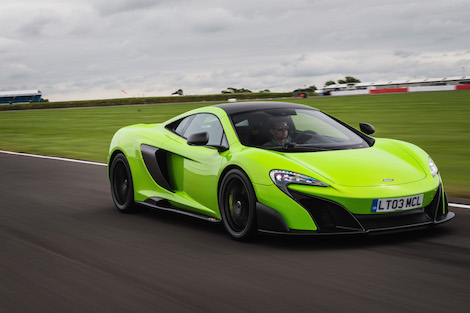
What you get for your money 5/5
A far more exciting version of an already intoxicating driver's car, the 675LT finesses the McLaren's Super Sport offering to the point where even its own test drivers admit that it's very near the P1 in intensity. All of which makes it look like a bit of a bargain - ridiculous as that might sound when it would cost about €591,000 landed in Ireland right now at today's exchange rates. There are plenty of options, which add significantly to the price, yet it's likely that most buyers will add around 25 per cent again to it in options.
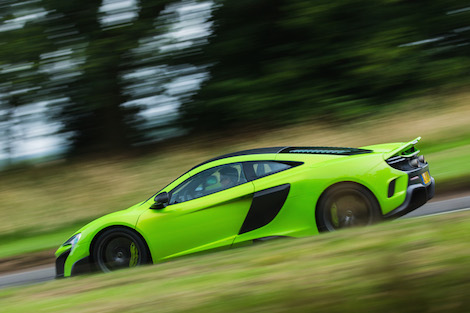
Alternatives
Ferrari 458 Speciale: a harder, more focused version of the McLaren 650S's old Italian foe, the 458 Speciale is a remarkable car.
Lamborghini Aventador SV: bigger, but similarly hardcore in nature, and similar money, too; the Lambo is a bruiser to the McLaren's precision.
Porsche 911 GT3 RS: a track-focused car that'll keep up with the McLaren 675LT for half the price. An incredible bargain.

Summary
McLaren could so easily have added a few options to the 650S, bumped the price up and put a limited build sticker on it and sold every one. It hasn't though; in reviving the Longtail name it has created an upgrade that encompasses almost every component, with greater focus on track performance over the 650S. The weight loss is remarkable and the resultant increase in intensity similarly so. The 675LT is a sensational version of an already incredibly impressive and capable supercar. That it has achieved such a marked step in driver appeal, feedback, feel and performance without detracting from the 650S's usability is testament to the firm's meticulous engineering and as a sign of things to come it's one we like very much indeed.

